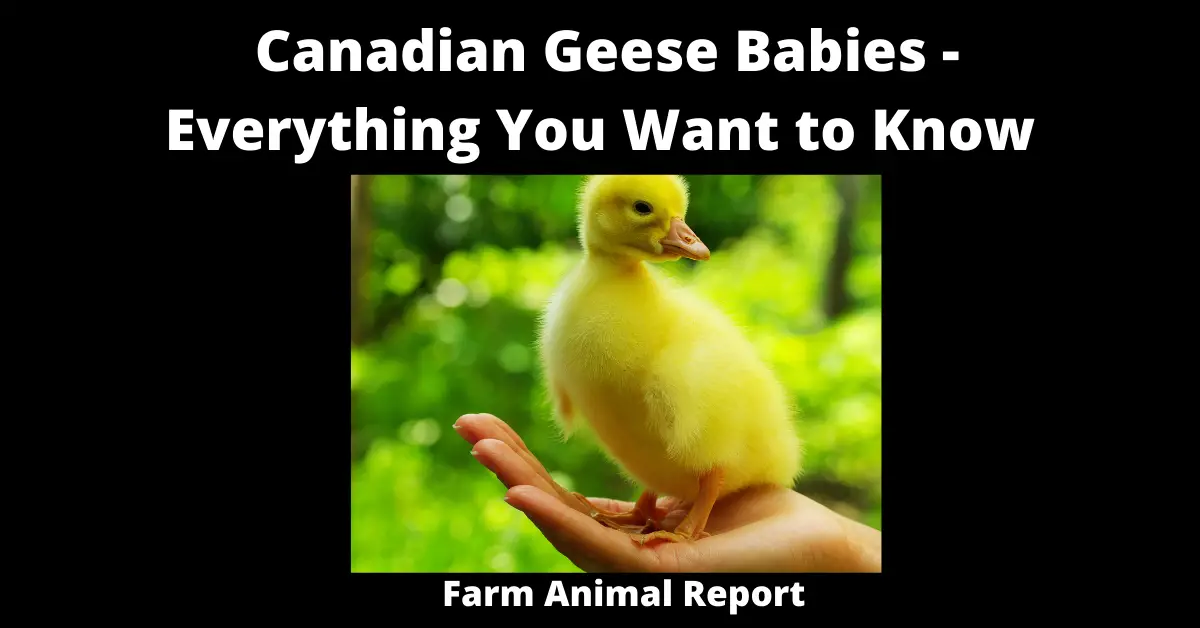Canadian Geese Babies
Canadian Geese are beautiful birds. They live and graze together in fields and usually eat grasses, grains, sedges, and berries. Serrated edges on their bills are a prominent sign of these birds—these jagged edges aid in cutting stiff grass stems.
Canadian Geese at a Glance
- COMMON NAME: Canada Goose
- SCIENTIFIC NAME: Branta canadensis
- TYPE: Birds/Aviaries
- DIET: Mostly herbivore
- GROUP NAME: Flock
- AVERAGE LIFE SPAN: 25 years
- WEIGHT: 6.5 to 20 pounds
- BODY: 32 to 43 inches
- WINGSPAN: 4.3 to 5.7 feet
Canada geese eat water vegetation in addition to grasses, sedges, grains, and berries. They “tip-up” when eating in water, reaching underneath and shredding water plants with their heads below the surface and their rear ends sticking up in the air. Male geese compete with one another for the attention of a single female. The female is given to the winning man as a mate, and the two may be together for the rest of their lives.
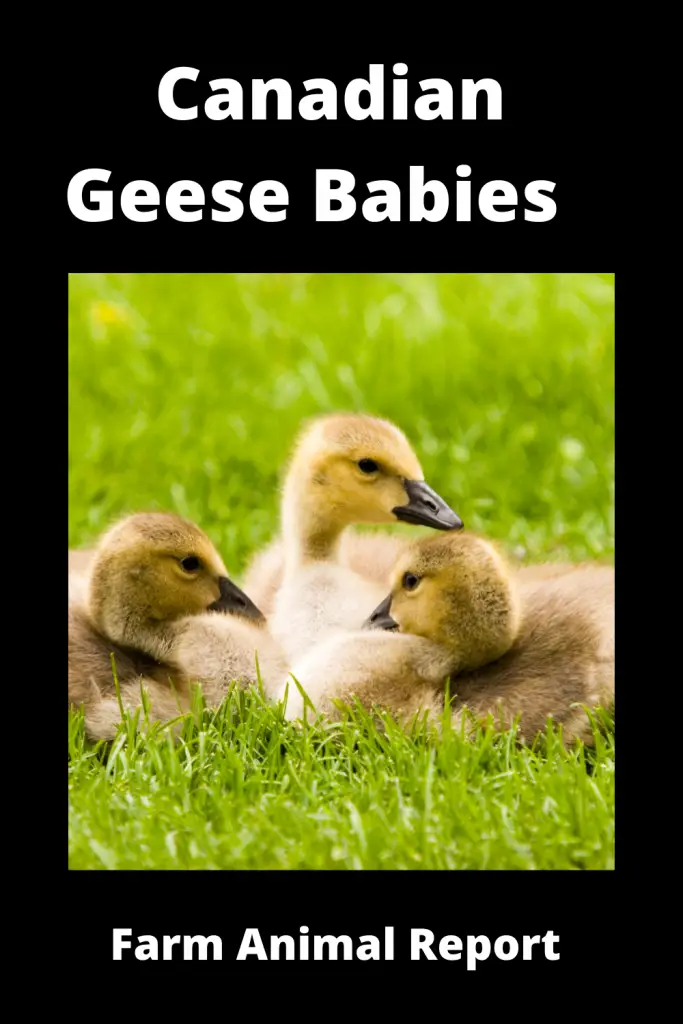
The female of the pair chooses a suitable location for her Nest. She selects an isolated spot and a little higher than everything else nearby, always near water. Dry grasses, twigs, and other plant materials are used to construct the Female’s Nest. She molds the Nest into a bowl with her body.
See Our – 12 Ways to Make Money by Geese Farming—Extensive Guidelines for Geese Farmers
See Amazons Educational Resources for Raising Geece
The goslings, or baby geese, emerge from the Nest with their eyes open and leave within 24 hours, following their parents. Swimming skill is innate in goslings. In less than two months, the goslings develop adult feathers and learn to fly.
The Canada Goose: Facts
• A sturdy neck
• Short tail
• Webbed toes
• Strong wings
• Each cheek has a white patch
• Excellent vision
• A long, dark neck
• Excellent hearing ability
Description
The Canada Goose belongs to the geese, ducks, and swans family of birds. The Canada Goose is divided into forty subspecies, ranging in size from 90 cm to 2 meters.
Habitat
Canada is a country that has Geese that can be found in a variety of environments, including those near water, grassy areas, and grain fields. Lawns are particularly appealing to Canada Geese for two reasons: they can digest grass, and when feeding their young, manicured grounds provide a clear view of any approaching predators. As a result, they’re ubiquitous in parks, airports, golf courses, and other sites with large lawns.
Diet
Geese graze primarily on grasses and sedges throughout the spring and summer, particularly skunk cabbage leaves and eelgrass. They eat more berries and seeds during the fall and winter, including agricultural grains, with blueberries being their favorite. They’re great in getting kernels out of dry corn cobs. Two subspecies have adapted to city life and graze all year on domesticated grasses.
Nesting Behavior
On the ground, frequently near water, usually on a muskrat mound or other somewhat elevated place. They desire a location with a wide range of unhindered views in all directions. The female chooses the site and constructs the majority of the Nest. After the second egg is laid, she begins to add down feathers and some body feathers. Her mate looks after her and the nest while she is incubating.
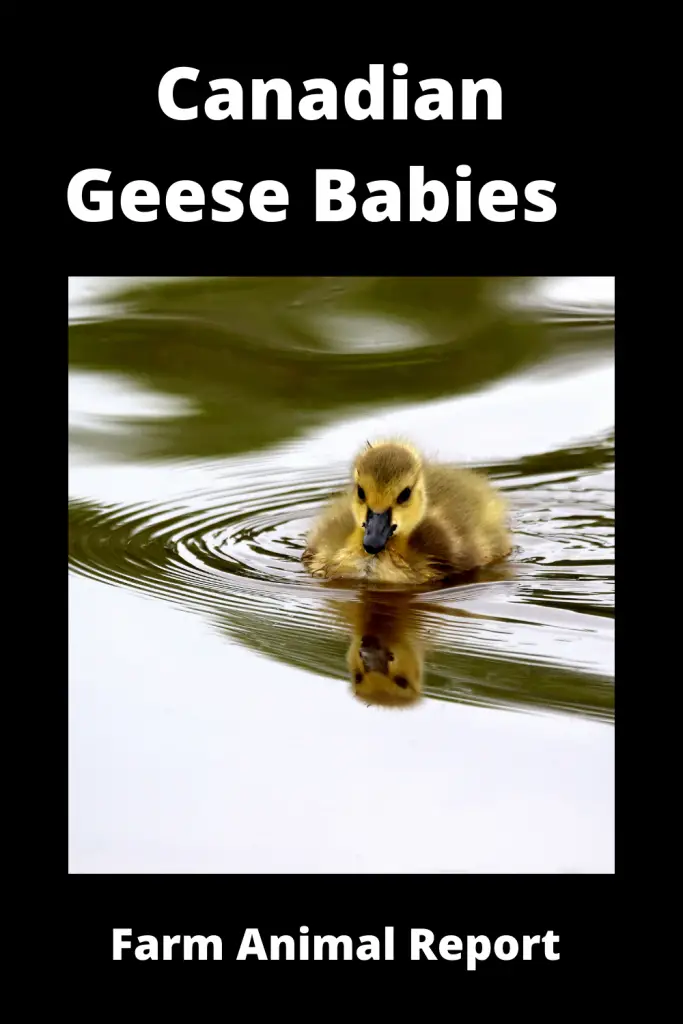
Nest description
A big open cup on the ground, lined with down and somebody feathers and composed of dry grasses, lichens, mosses, and other plant material.
Nesting FACTS
• 2-8 eggs per clutch
• Egg Width: 2.3 in. (5.6 cm)
• Egg length: 3.4 in (8.3 cm)
• Period of Incubation: 25-29 days
• Period of Nesting: 43-50 days
• Egg color and consistency: White egg with a creamy texture.
Hatchlings are covered in yellowish down and their eyes are open at the time of hatching. They can walk, swim, feed, and even dive after leaving the nest at 1-2 days old, depending on the conditions. They have enough energy in their yolk sac to last two days without eating.
The Canada Goose’s Distribution
The location of Canadian geese varies depending on the time of year. Geese that used to migrate south during the winter are now becoming permanent residents in some areas.
They can travel across North America from coast to coast at different periods of the year. They live in the southern United States during the winter, whereas the northern United States has a year-round population and Canada has a summer population.
Interactions between Canadian Geese and Humans
Canada geese and people often interact, as do many other flourishing urban wildlife, and these interactions are usually unfavorable. They are regarded as pests, and rightly so. The birds are susceptible to a variety of diseases that might infect other birds in the area.
Their excrement also spread bacteria and alters the chemistry of lakes and ponds, killing native fauna in the process. Humans will hurt or kill the birds in revenge, both legally and unlawfully. Non-migratory geese, which do the most harm.
Domestication
Canadian geese are wild birds, even though they resemble farmed geese. They have not been tamed in any way, and the Migratory Bird Act protects them.
The Canada Goose’s Habits
The majority of this species’ members are migratory, flying in flocks to the south for the winter and north for the summer. Migrating flocks frequently fly in a v-shaped formation to save energy while flying and because it is the most aerodynamic method to do so.
The birds can be aggressive, especially during the breeding season. Goose pairs mate for life and will defend their eggs, goslings, and nests from predators.
When a Canadian geese reach the age of two, it begins looking for a mate. It will usually stay with this mate until either it or the mate dies. After mating, the couple builds a nest out of plant matter and lines it with their feathers.
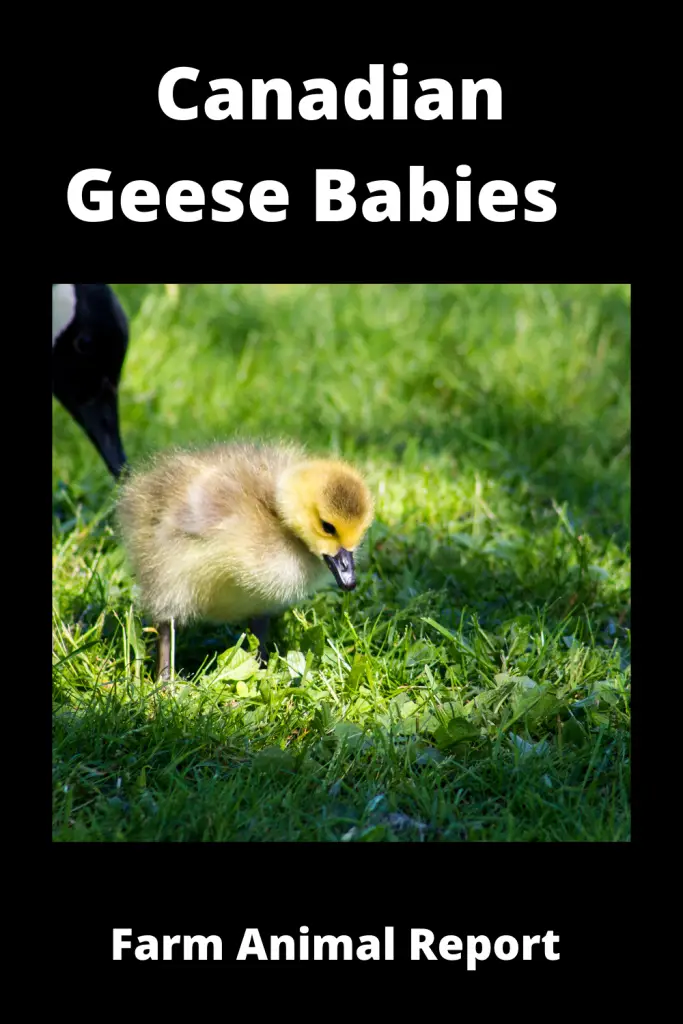
Behavior of Canadian Geese
Canada Geese graze on grass and dip in shallow water by tilting forward and stretching their necks underwater. They congregate in large flocks throughout much of the year, and many of these birds may be linked to one another. With meager “divorce rates,” they mate for life, and partners stay together all year. Geese mate “assortatively,” with larger birds preferring larger mates and smaller birds preferring smaller mates; the male is usually larger than the female in any particular pair.
The majority of Canada Geese do not breed until their fourth year; less than 10% of yearlings breed, and most pair bonds are insecure until the birds are at least two or three years old. There have been reports of extra-pair copulations.
Pairs break apart from flocks in the spring and begin defending territories. The spacing of these pairs varies depending on nest site availability and population density; if populations are significant, birds may end up nesting in view of one another even after several fights, and some populations are semi-colonial.
Head pumping, a bill opening with tongue elevated, hissing, honking, and vibrating neck feathers are all examples of Canada Goose threat displays. Geese may grasp each other by the breast or throat and strike each other with their wings if an intruding bird does not retreat. Injuries can be possible as a result of fighting.
The female chooses a nesting place, constructs the Nest, and incubates the eggs. For the first week after hatching, she may brood goslings in cold, damp, or windy conditions and while they are sleeping. While the male goose guards the Nest, the female incubates it.
Goslings begin pecking at small things shortly after hatching and spending most of their time sleeping and eating. They live with their parents all of the time; however, “gang broods” occasionally form, especially in the southern hemisphere. At least two broods, sometimes four or more, feed, travel, and loaf together, with at least one adult accompanying them.
Young frequently spend their first year with their parents, especially in the more giant subspecies. Birds become increasingly gregarious as the summer progresses; they may congregate in huge numbers at food sources, and, if food is scarce and spotty, they may compete with displays and fights.
Even in extreme cold, geese can stay in northern places with some open water and food resources over the winter. Geese that breed in the far north of their range move great distances to winter in the far south, but geese that breed in southern Canada and the conterminous United States migrate only a little space or do not migrate at all.
Year after year, individuals tend to return to the same migratory stopping and wintering sites. Because of overwintering birds and movements between nightly resting places and feeding sites, spring migration can be challenging to trace. Still, most migratory movements tend to travel north beyond the retreating snow line, where temperatures average 35 degrees.
In both spring and fall, migrating flocks usually consist of loose aggregations of family groups and individuals. Flights typically begin at dusk, but they can start at any time of day, and birds fly during all hours of the day and night. They move in a V shape, with the flock being led by experienced individuals.
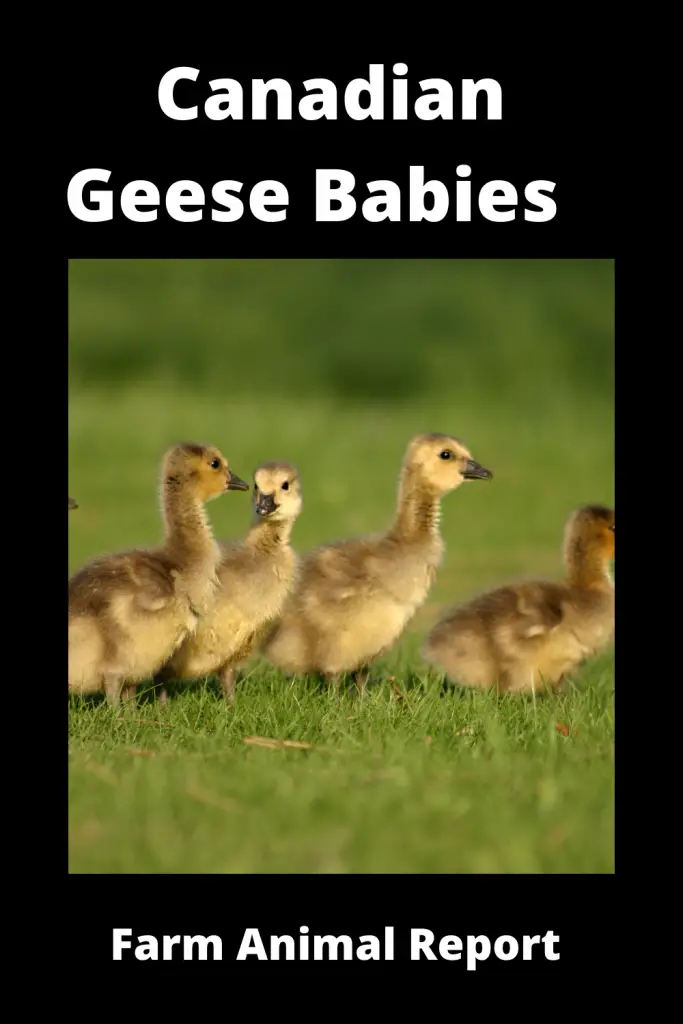
Protection of the Environment
According to the North American Breeding Bird recent survey, Canada Geese have become more widespread and has grown in number between 1966 and 2015. In 2015, the population of North America ranged from 4.2 million to over 5.6 million people. The Continental Concern Score for this species is a 6 out of 20. The State of North America’s Birds Watch List for 2016 does not include it.
The abundance of lawns, golf courses, and parks provide such consistent habitat for Canada Geese that they now stay in specific locations all year instead of migrating as they once did. Some communities have recently started thinking of Canada Geese as nuisances (for eating grass or polluting lawns) or even hazards (around airports, where collisions with planes can be hazardous). Hunters kill about 2.6 million Canada Geese in North America, but their numbers do not appear to be affected.
Backyard Suggestions
Mowing and maintaining lawns all the way to the water’s edge, or maintaining exceptionally vast lawns anyplace near water, invites Canada Geese in. They are frequently discouraged from strolling on a lawn if plastic netting is placed over it.
To attract a breeding pair, consider erecting a nest platform. Make sure it’s up well ahead of the breeding season.
Frequently asked questions about Canadian Geese
When Do Canadian Geeselay Eggs?
Canadian geese typically start nesting when they are three years old. Unless one of the partners dies, adult couples usually stay together for the rest of their lives. Lone geese will usually find a new mate within the same breeding season. In March, April, or May, one to ten eggs are placed in the Nest, usually five to six.
The female goose incubates the eggs as the male gander guards the area—the female-only exits the Nest to feed once a day.
After 25 to 29 days of incubation, the eggs hatch, within 24 hours, the young, known as goslings, can walk, swim, and feed themselves.
The goslings are fiercely protected by both parents (particularly the gander) until they are able to fly, which is around ten weeks. For almost a year, the young geese stay with their family group.
Geese frequently re-nest in or near the first Nest if the Nest or eggs are destroyed. A single clutch of Canada geese can be raised each year.
Where do Canadian Geese Nest?
Every year, Canadian geese return to the exact breeding locations. Their nesting grounds are frequently found on an island, on a small hill, in the shrubs, or a raised place around a lake.
When are Canadian Geese babies born?
The resident geese nesting season lasts from late February to mid-May, with the majority of the eggs hatching in early May. Both of the pair’s birds visit the Nest.
Males begin mating at the age of three, while females start breeding at three or four. Canadian geese have a breeding season that lasts from February to April, depending on the weather. Once a year, geese mate.
What are Canadian Geese Babies called?
The goslings, or baby geese, take roughly a month to hatch. Down is a fluffy feather that is used to cover babies. They emerge from the Nest with their eyes open and leave within 24 hours, following their parents.
What is a litter of Geese called?
A gaggle of geese on the ground is referred to as a gaggle; in flight, they are referred to as a skein, a team, or a wedge; and when flying close together, they are referred to as a plump.
How Many Canadian Gooslings are present in one Nest?
A single female goose can have between 2 and 8 gooslings in her Nest; however, gang broods might have anywhere from 20 to 100 goslings following only a few adults. Gang broods are more common in regions where there are a lot of nests. Long into the winter, family groupings comprising parents, that year’s offspring, and maybe one or two of the previous year’s goslings stay together.
When do Babt Canadian Geese get their Feathers/Fly?
Between the ages of 2-3 months, goslings learn to fly. They stay with both their parents for the first year of their life, and they will migrate with their parents before forming groups with other young geese.
Do Both Goose Parents Guard the Babies?
Both parents are responsible for actively safeguarding and caring for their offspring; Canadian geese require both parents to raise their goslings. In the same area, several family groupings raise broods. Crèches are brood flocks that consist of many families.
What do you Feed Baby Canadian Geese?
Goslings eat grass as their natural meal. Providing healthy pasture during the growing season can save a lot of money on feed. They may survive wholly on decent pasture at five or six weeks of age; however, some additional feeding is recommended until the birds are fully feathered.
Predators of Baby Canadian Geese
Humans, raccoons, coyotes, bobcats, skunks, foxes, gulls, crows, eagles, and magpies, ravens are all predators of Canadian geese and their eggs.
Due to the plenty of food and the relative scarcity of natural predators, Canadian geese hatched in urban areas may have exceptionally low first-year mortalities.
Do Canadian Geese Kill Their Babies?
Usually, Canadian Geese do not kill their babies unless they feel an imminent threat to their own survival.
When Do Canadian Geese Leave their Babies?
Within 24 hours, the young, known as goslings, can walk, swim, and feed themselves. The goslings are fiercely protected by both parents (particularly the gander) until they can fly around ten weeks. For almost a year, the young geese stay with their family group.
Can a Baby Canadian Geese be kept as a Pet?
No, Canadian geese are not suitable as pets. They’re wild birds, so that they can be noisy, filthy, and aggressive. The species is protected by federal law (see “Domestication”), and it is unlawful to keep them as pets.
Can you eat Canadian Geese?
It depends on the person, but most people dislike it, and several jurisdictions have outlawed their hunting and eating. Canadian geese are eaten by some people. However, because they are so slender, cooking them without drying them out and making them rough is difficult. They’ve become such a problem in some locations that special hunts have been organised to get rid of them. They aren’t auctioned because, as another answer indicated, they are legally protected.
Why are Canadian goose present everywhere in City Parks?
Geese flock near open water and plentiful food. We’ve gotten rid of their predators in our cities and replaced them with limitless swaths of luscious green grass. Our industries’ thermal pollution keeps our waterways open even in the coldest winters. Canadian geese have formed non-migratory populations in these places, indicating that they recognize a good thing when they see it.
What can we do to cut down on their Numbers?
For starters, we can cease feeding them. Next, one of the more humane and successful population management techniques is egg-addling, which involves shaking newly placed eggs by licensed personnel (not just anyone, because these birds have legal protection as migratory birds). The embryo inside is killed at an early stage as a result of this. The eggs are continued to be brooded by the parents, but they do not hatch. It’s more effective than destroying the Nest because the parents will re-lay their eggs. Addling eggs once a season is an effective population control method for waterfowl because they only have one brood every season.
Shouldn’t we slaughter all the geese that have taken up residence in our parks? We’d be able to feed the poor!
It’s possible. They are, however, protected as migratory birds, and a culling campaign would very certainly necessitate the introduction of legislation, which would be politically tricky. There would be protests, negative media coverage, and so far, no one has taken it on, as far as I’m aware. Controlling mute swans in the Chesapeake Bay, for example, has been a contentious issue.
The Canada Goose: Some Interesting Facts
- Canada geese are widespread and can be a nuisance. However, you may not be aware of several interesting facts regarding these birds. Find out more about these fascinating birds in the following sections.
- A goose is a goose, but a Gander is not one – You shouldn’t call every goose a goose, hypothetically speaking. This is because a male goose is a “goose” is a female goose, while a “gosling” is a baby goose.
- Geese – There are a few different names for a gaggle of geese. Most birds can be referred to by the term “flock.” “Chevron” and “string,” for example, are two more irregular nouns.
- Committed Lovers — Canada geese are monogamous, as are many other goose species. Monogamous animals spend their entire lives with the same partner. If their current mate dies, they will only find a new mate.
- Human Success Equals Goose Success – Humans have created the ideal environment for geese to thrive in. Many of the things we do to change our environment help geese thrive. They prefer wide locations with well-kept grass to view predators and eat. As a result, you can find them in parks, airports, golf courses, and other places.
Final Thoughts
The Canada Goose can be found in a wide range of habitats, including wooded areas and places without trees, prairies, Western Canadian plains, Arctic coastal flatlands, and mountainous terrain. The pair constructs a nest near a body of water (lake, marsh, pond), on a tiny island, or along the coastline in the spring.
The newborn geese learn to find food and, more importantly, to be alert of the various hazards lurking in the environment around them throughout their first summer. They know to be afraid of fox footprints on the ground or a bird of prey swooping overhead. The newborn Canada geese are 25 times bigger than they were at birth by the time they are two months old.


